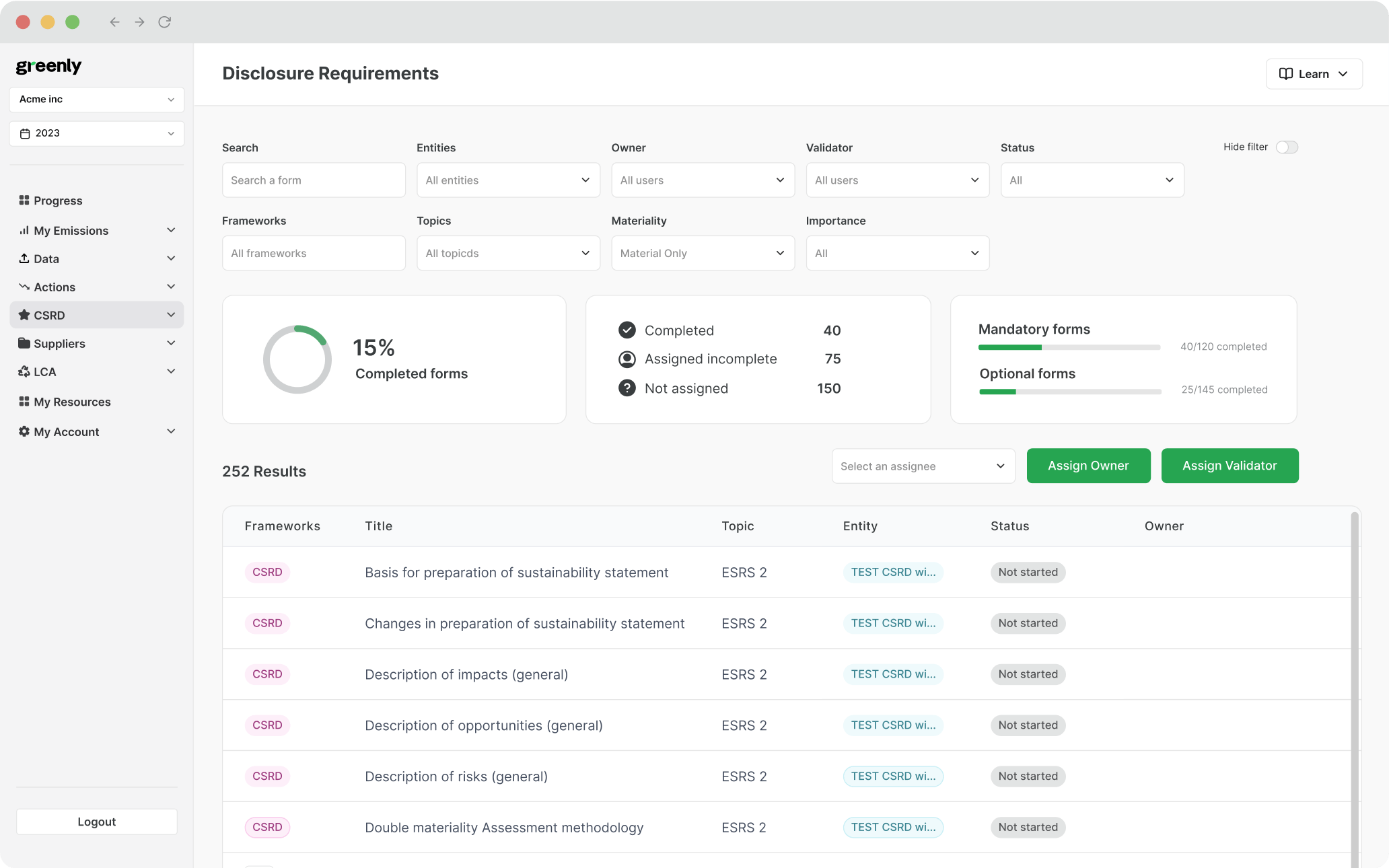1) Set a baseline
First, the project defines what would likely happen without it — the “business as usual” emissions level.
ESG / CSR
Industries



Carbon credits are everywhere right now: in airline checkout pages, corporate climate claims, and heated debates about greenwashing. And yet, for something that’s talked about so often, they’re still widely misunderstood.
So instead of adding to the noise, this article aims to dispel any confusion by answering the five questions people most often ask when they’re trying to make sense of carbon credits.
What are carbon credits?
How do carbon credits work?
What is the difference between a carbon credit and a carbon offset?
What are the pros and cons of investing in carbon credits?
How can you invest in carbon credits?
At a basic level, a carbon credit is a tradable unit linked to a reduction or removal of greenhouse gas emissions. Each credit usually represents one tonne of carbon dioxide equivalent (CO₂e) that has either been avoided (for example, by replacing fossil fuels with renewable energy) or removed from the atmosphere (for example, through reforestation or carbon capture).
Companies or individuals can buy carbon credits to compensate for emissions they haven’t yet been able to eliminate, such as those linked to manufacturing, transport, or air travel. When a carbon credit is purchased and retired, it is meant to reflect support for an equivalent emissions reduction taking place elsewhere.
In practice, carbon credits are generated by a wide range of projects, for example:
Reforestation
Planting trees or restoring forests to absorb CO₂ from the atmosphere over time.
Renewable energy projects
Supporting solar and wind power to reduce reliance on fossil fuels and lower emissions.
Waste-to-energy
Turning organic waste into energy, which reduces landfill methane emissions.
Methane capture
Capturing methane from landfills or farms to prevent it from escaping into the atmosphere.
Carbon credits are not a standalone solution to climate change. They don’t erase emissions that have already occurred, and their impact depends heavily on project quality, verification, and long-term effectiveness. This is why they’re generally seen as a complement to emissions reduction, not a substitute for cutting emissions at source.
Used carefully, carbon credits can play a role in supporting climate action and funding projects that might not otherwise exist. But meaningful progress still depends on bigger, systemic changes: from how energy is produced, to how goods are made and consumed, to how companies and individuals reduce their own carbon footprints over time.
Carbon credits work a bit like a paper trail. A project (say, a wind farm or a landfill methane system) calculates the emissions it avoids or removes, gets that claim checked by an independent verifier, and then receives a set number of credits. Those credits can then be sold, and once a buyer uses them, they’re retired so they can’t be counted twice.
Here’s what that process usually looks like:
First, the project defines what would likely happen without it — the “business as usual” emissions level.
The project is designed to avoid, reduce, or remove emissions — for example renewable energy, methane capture, or reforestation.
The project monitors results and quantifies the impact in tonnes of CO₂e, using a recognised methodology.
An independent third party checks the data and confirms the reductions are real — and above what would have happened anyway.
Once approved, credits are issued (usually 1 credit = 1 tonne CO₂e) and recorded in a registry.
Credits can be traded. When a buyer uses them to offset emissions, they’re retired so they can’t be used again.
Done well, this creates a financial incentive to fund climate projects. But the real-world impact depends on quality — how the project is designed, verified, and maintained over time.
The terms carbon credit and carbon offset are often used interchangeably, but they refer to different parts of the same process.
A carbon credit is the unit. It’s a tradable certificate that typically represents one tonne of carbon dioxide equivalent (CO₂e) that has been reduced, avoided, or removed through a specific project.
A carbon offset is the action. It refers to the practice of compensating for emissions by buying and retiring carbon credits to balance part of a carbon footprint.
In other words: a carbon credit is what you buy; offsetting is what you do with it.
Carbon credits can play a role in climate action, but they come with clear limitations. Understanding both sides is key to using them responsibly.
Here are some of the benefits of using carbon credits:
But it's also important to recognise their limitations:
Carbon credits are better than doing nothing, but they’re not a climate solution on their own. Used responsibly, alongside credible emissions reduction efforts, they can support climate action. Used poorly, they risk delaying the changes that matter most.
Some companies, particularly airlines, have made carbon credits highly visible by offering them at checkout as a way to compensate for flight-related emissions. While convenient, this is just one - and often the most simplified - entry point.
Beyond that, there are several broader routes.
No. Buying carbon credits does not make a person or company “carbon neutral” or “net zero”. Carbon credits are sometimes used to compensate for residual emissions, but net zero and carbon neutrality are aspirational frameworks that depend primarily on reducing emissions at source. Credits may play a limited, supporting role, but they don’t cancel out emissions in a literal or permanent way.
Quality depends on how the underlying project is designed, measured, and monitored. In general, higher-quality carbon credits are linked to emissions reductions or removals that would not have happened without the project, are expected to last over time, and are verified using transparent methodologies. Because these factors vary widely between projects, not all carbon credits deliver the same level of climate benefit.
Carbon credits can support emissions reductions or removals in one place while emissions continue elsewhere. They do not directly reduce emissions at the source where they are used. Their real-world impact depends on the integrity of the project generating them and on whether credits are used alongside genuine efforts to reduce emissions, rather than instead of them.
Carbon credits are not inherently greenwashing, but they can be used in misleading ways. Concerns tend to arise when credits are used to justify continued emissions, delay meaningful reductions, or support broad climate claims without transparency. When used carefully, clearly, and alongside robust emissions reduction strategies, carbon credits are less likely to raise these concerns.
Yes. Individuals can purchase carbon credits through voluntary markets, often via online platforms or as part of services such as flight compensation schemes. As with corporate use, buying credits is best seen as a supplementary action, not a substitute for reducing personal emissions where possible.
Some carbon credits are linked to projects that prevent emissions from occurring in the first place, such as renewable energy replacing fossil fuels. Others are linked to projects that actively remove carbon dioxide from the atmosphere, such as reforestation or engineered carbon capture. Removal credits are often considered more robust, but they are typically more expensive and come with their own challenges around measurement and permanence.
Nature-based projects can provide real climate, biodiversity, and social benefits, but they also carry risks. Stored carbon can be released again through events like fires, land-use change, or poor long-term management. This is why long-term monitoring and protection are critical when assessing the credibility of nature-based carbon credits.
Emissions reductions should always come first. Carbon credits are most credible when they are used only for emissions that cannot yet be eliminated and when they form part of a broader climate strategy that includes measurement, reduction targets, and transparent reporting.
